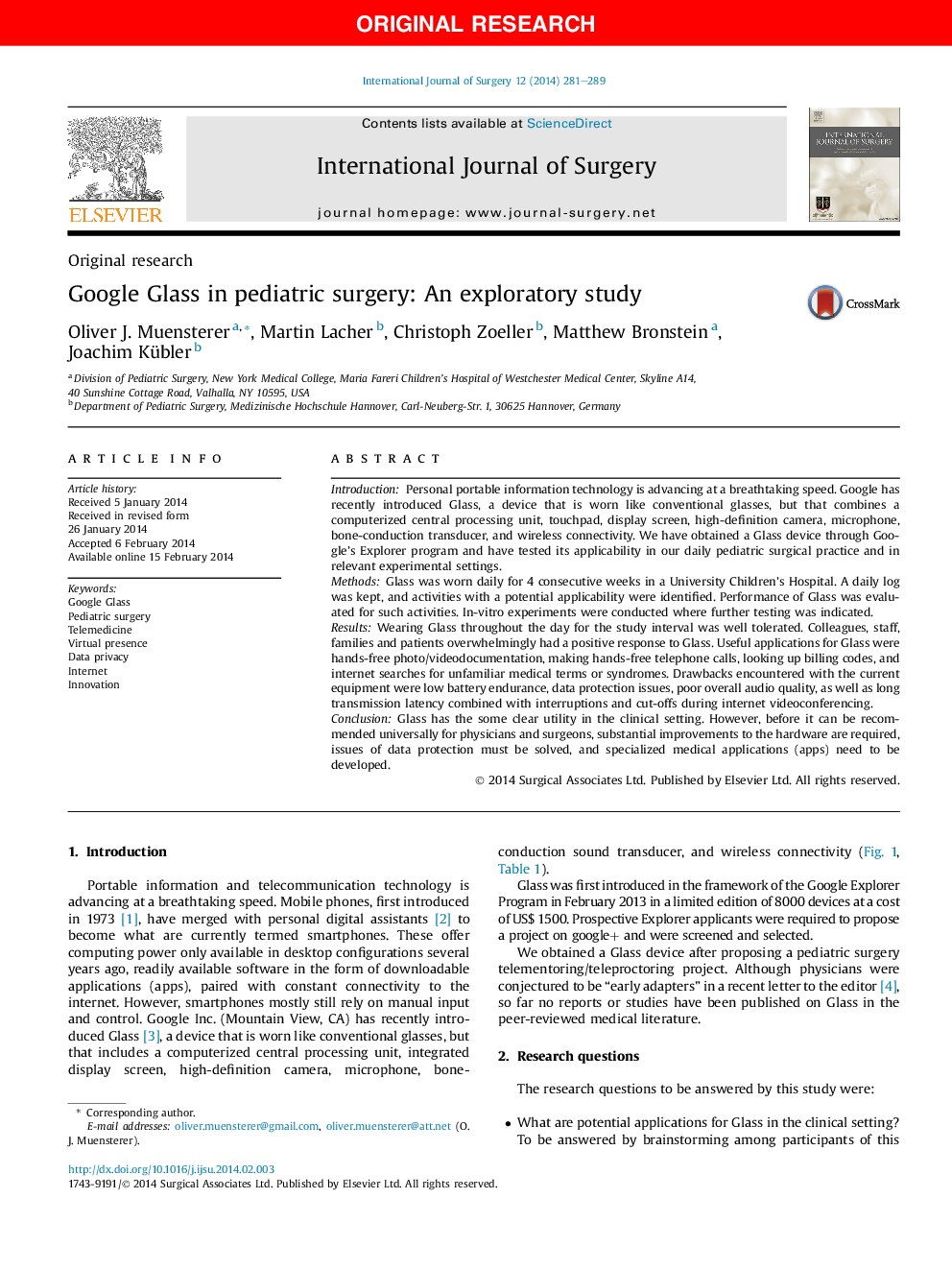| Article ID | Journal | Published Year | Pages | File Type |
|---|---|---|---|---|
| 6251905 | International Journal of Surgery | 2014 | 9 Pages |
IntroductionPersonal portable information technology is advancing at a breathtaking speed. Google has recently introduced Glass, a device that is worn like conventional glasses, but that combines a computerized central processing unit, touchpad, display screen, high-definition camera, microphone, bone-conduction transducer, and wireless connectivity. We have obtained a Glass device through Google's Explorer program and have tested its applicability in our daily pediatric surgical practice and in relevant experimental settings.MethodsGlass was worn daily for 4 consecutive weeks in a University Children's Hospital. A daily log was kept, and activities with a potential applicability were identified. Performance of Glass was evaluated for such activities. In-vitro experiments were conducted where further testing was indicated.ResultsWearing Glass throughout the day for the study interval was well tolerated. Colleagues, staff, families and patients overwhelmingly had a positive response to Glass. Useful applications for Glass were hands-free photo/videodocumentation, making hands-free telephone calls, looking up billing codes, and internet searches for unfamiliar medical terms or syndromes. Drawbacks encountered with the current equipment were low battery endurance, data protection issues, poor overall audio quality, as well as long transmission latency combined with interruptions and cut-offs during internet videoconferencing.ConclusionGlass has the some clear utility in the clinical setting. However, before it can be recommended universally for physicians and surgeons, substantial improvements to the hardware are required, issues of data protection must be solved, and specialized medical applications (apps) need to be developed.
